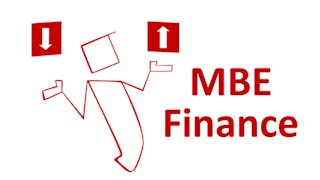Accounting is the language of business. You should be able to explain the top 30 concepts to your cousin in a way they understand it.



Mastering Business Essentials: Accounting
This course is part of MBE Mastering Business Essentials Specialization

Instructor: John Kim
Top Instructor
Access provided by Project Access International
Recommended experience
What you'll learn
Learn how to speak the language of business (accounting). Learn the financial statements so you can hold a business conversation with anyone.
Skills you'll gain
Details to know

Add to your LinkedIn profile
See how employees at top companies are mastering in-demand skills

Build your subject-matter expertise
- Learn new concepts from industry experts
- Gain a foundational understanding of a subject or tool
- Develop job-relevant skills with hands-on projects
- Earn a shareable career certificate

There are 5 modules in this course
Accounting is the universally accepted language of business. It allows managers, investors, creditors - everyone - to have a unified, and commonly accepted way to analyze the business. It's like a superhero with x-ray vision to see the insides of a company's business. It helps to answer questions like: How much did we sell? Are we profitable? Who owns the business? How much debt do we have? Do we have enough cash to pay our bills?
What's included
4 videos1 reading
The income statement (starting with revenues) is like a waterfall, where you take out different expenses until you get to the "bottom line" of net profits. Your ability to do this simply and develop personal intuition about the different types of margin (gross, operating, net) will immediately differentiate you from most people. Let's use the example of a pen company to dig into what's driving costs and profitability.
What's included
3 videos1 reading1 assignment
The balance sheet is a financial snapshot of the ownership of a business. Namely, how much of it do you own (equity) and how much it was borrowed from other people with debt (liabilities). The main formula to remember is A = L + E. Assets (what you have) = Liabilities (what you owe) + Equity (what you own). This is a super powerful way to answer questions like a) What's our ability to pay our bills? b) How much debt do we have? c) How much inventory do we have?
What's included
3 videos2 readings
Debt is a powerful tool in business that is sometimes misunderstood. 1) Debt can be good if you can borrow funds responsibly, make a good return on it, pay back the interest, and grow the business faster than if you didn't have debt. 2) Debt can be bad if you borrow beyond your ability to repay it, so that you are stuck in a cycle of debt. (e.g., keeping credit card balance and paying 20%+ annually) This same dynamic "debt can be good or bad" applies to student loan debt and government public debt.
What's included
1 video2 readings
Cash flow statement is the 3rd financial statement. The cashflow statement shows how money comes in/out of a company through operations, financing (raising money), and investing (getting a return on their investments). Often it only gets attention when a company is in crisis or is having trouble paying their bills. Return on investment (ROI) is a common and useful tool in business. If I invest X, and get Y, how much of a ROI did I get? Of course, it gets very complicated quickly because of the addition question: a) how accurate is that forecast b) what's your risk tolerance? c) what's the time frame d) what are the alternatives?
What's included
3 videos1 reading1 assignment1 peer review
Earn a career certificate
Add this credential to your LinkedIn profile, resume, or CV. Share it on social media and in your performance review.
Instructor

Offered by
Why people choose Coursera for their career




Explore more from Business

Emory University

Emory University

Emory University

Emory University
¹ Some assignments in this course are AI-graded. For these assignments, your data will be used in accordance with Coursera's Privacy Notice.

